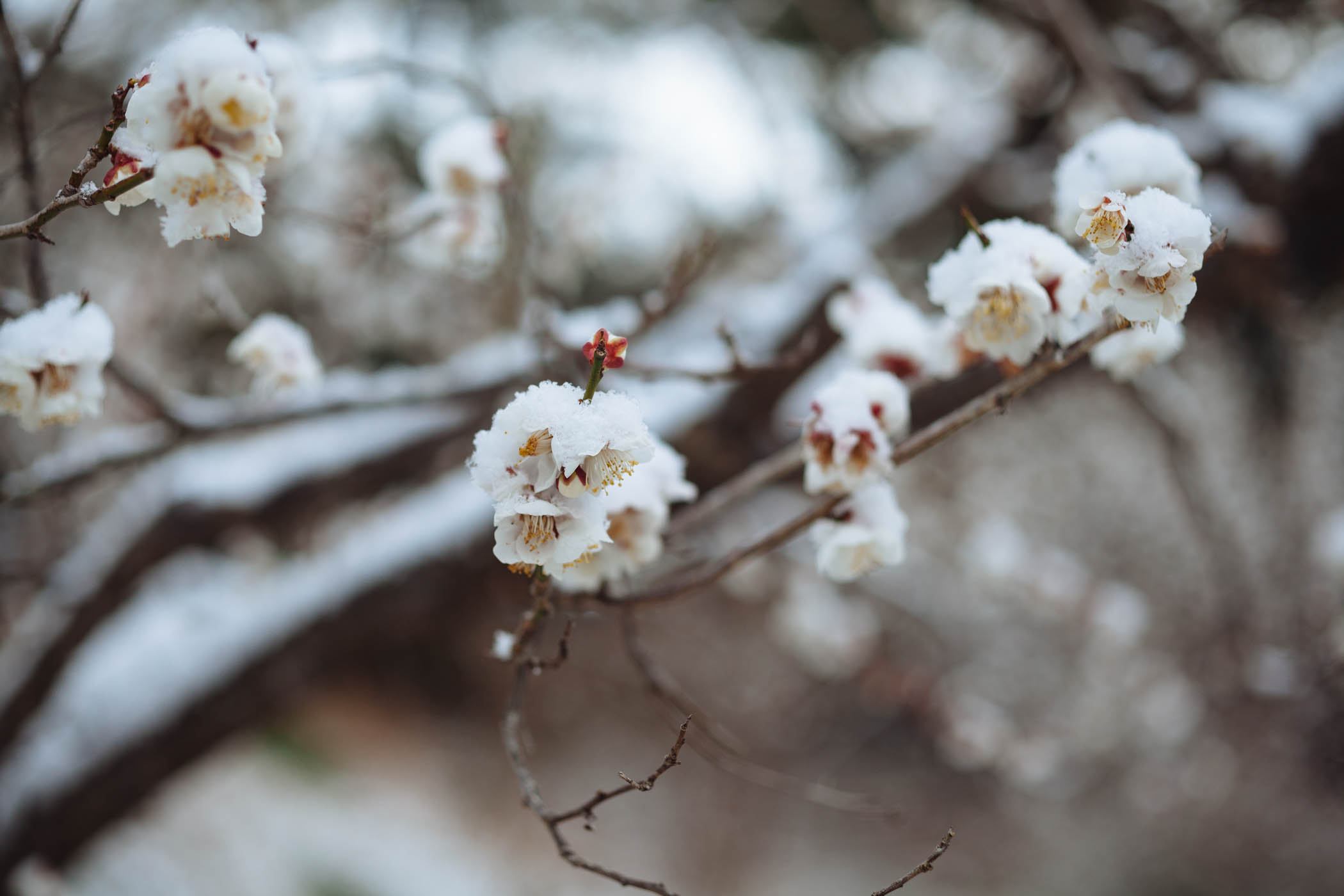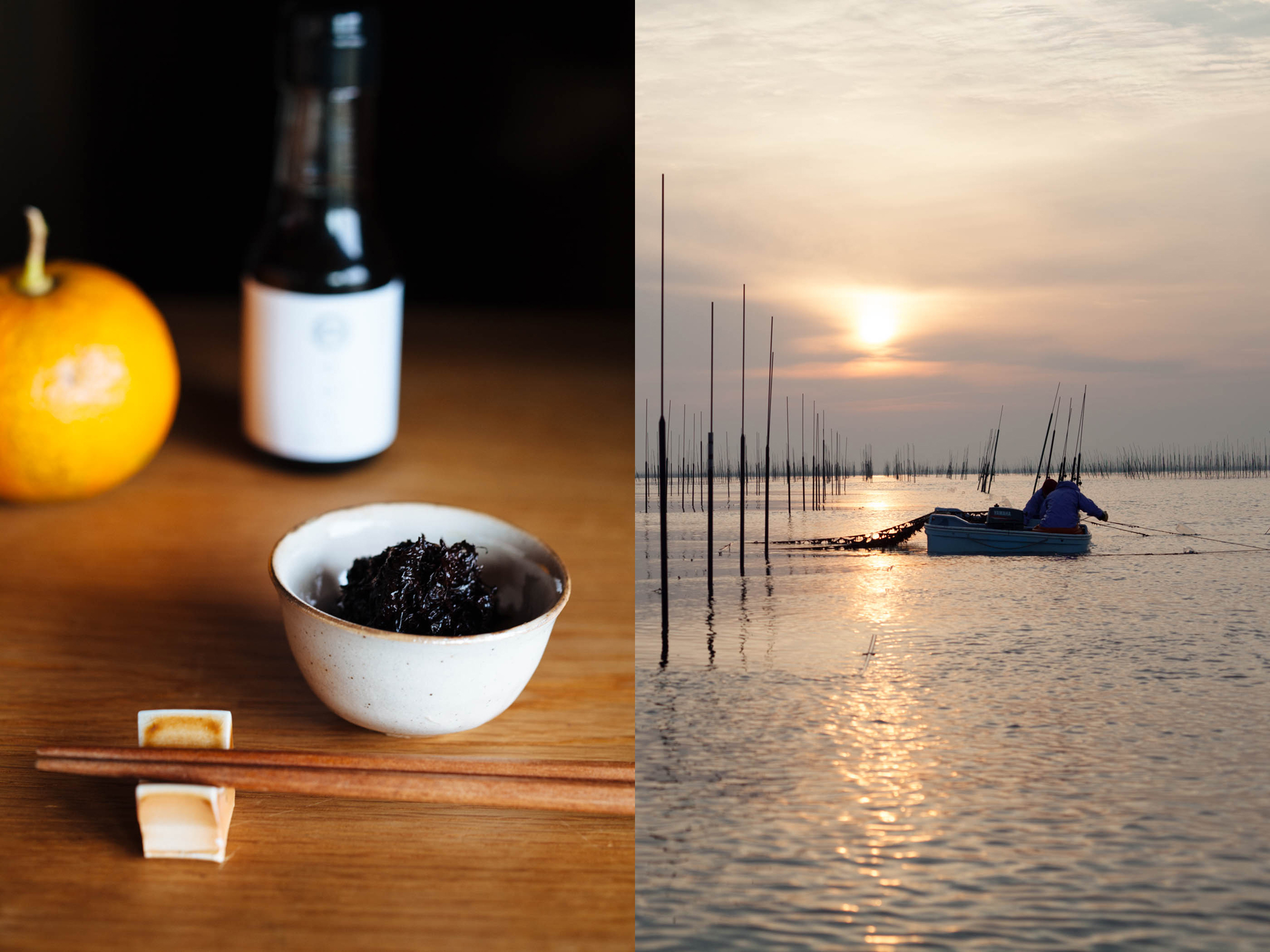Winter and spring in a single dish

Snow falls as I slide containers and jars around in my refrigerator looking for a little inspirations. I think of the spirited plum blossoms in the orchard, seemingly delicate and frail but bearing the brunt of a spring squall with a grace and resolve I admire. As the last gasp of winter rages turbulent against the surge of spring, I decide on a dish just right for a night like this. It’s a dish inspired by Yoshiko Iwai, an earnest and dedicated tempura chef of great virtuosity who is also a family friend, a dish I ate at his arresting cypress counter in Ginza that perfectly illustrates this time of year. Before the tempura course began he served a lovely small portion of nama nori and nanohana that took my breath away. Nori is cultivated in winter and raw nori is a seasonal specialty. It ties us to the cold mid-winter waters, clear skies, and bright sunlight in which nori thrives while nanohana, the first tender leaves and buds of the rapeseed plant, is a harbinger of spring. I had long considered dishes made by chefs of Iwai’s stature as beyond the realm of kateiryouri to be made at home. But as I sat at his counter, I saw there before me a fresh and exciting combination of two ingredients with which I was quite familiar and I could imagine it on my own table.

Nama is the word for raw in Japanese and nama nori, raw nori, is just that. With a thorough but gentle cleaning that preserves just the right amount of salinity first flush nori, harvested in the Ariake Sea here in Saga prefecture, goes from ocean to freezer within hours and is the closest you can get to plucking nori right off the nets. Uncommon and exquisite, I like to think of nama nori as the caviar of sea vegetables. I cut a strip from the frozen sheet resembling a slate roof tile, and return the rest to the freezer. Its threads are long and must be roughly chopped so as not to tangle in the throat. As the inky black nama nori thaws it grows slippery and supple. It has a springy, briny bite and when served straight, it makes for a perfect little appetizer. In our house, if eating a traditional meal paired with sake, I season the nama nori with a dressing of daidai, bitter orange, and light soy. If the meal is western leaning and paired with a white wine, I’ll bring a good olive oil and salt to the table. For those who find the taste a little too of-the-sea, a squeeze of lemon helps.

Nanohana, with meaty stems sporting ruffled leaves and yellow florets, has a brassica taste laced with a hint of bitterness, that telltale taste of spring. As the season advances nanohana will disappear from the markets and cone to define the landscape, crowding roadsides and invading dormant rice fields. Great swaths of yellow blooms will cheer up the drab brown valleys and signal that the season for planting is nigh. When tossed with nama nori, the bright citrusy juice of daidai collected from a tree in our yard and juiced while still green, cuts the briny quality of raw nori while a generous slip of silky light sesame oil over blanched nanohana mellows the bitterness. The salt and umami of soy marries the two flavors.
As I settled into the ways of washoku I understood that it is so much more than a manual of flavors. At its essence, it asks the cook to be fully attuned not so much to the ingredients of a country or culture but to the ingredients of a time and place. Mine is a table built of oak, not a counter made of cypress. Here the sparkle of late winter stars is as close as we come to Ginza’s glitter. To cook in harmony with the environs here in Mirukashi is my task. Mixing nanohana and namanori, I think of the wonderful moments I’ve had at Iwai’s restaurant, of his wit and humor and goodwill towards our family. Within the rhythms of daily cooking, recipes are not replicated so much as borrowed and reinterpreted and when a recipe comes from one we love or admire it feels seasoned with a dash of their spirit.
